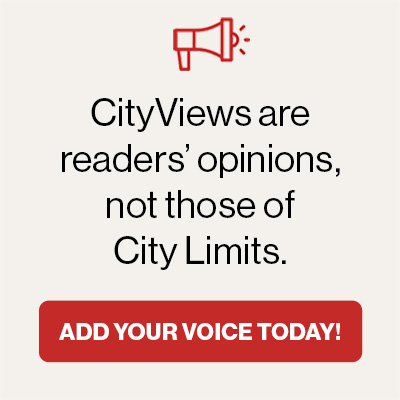“Ten years later, Harlem is still waiting for justice and for a recognition of the truth that community safety doesn’t come from raids, prisons, or gang lists.”


On June 4, 2014, one of New York City’s most extensive gang raids took place at the Manhattanville and Grant public housing developments in West Harlem, sweeping up 103 young people, most of them Black and Latino.
A decade later, families impacted by the raid continue to struggle with the trauma and fallout. The resources and services the community asked for before and after the raid never came because anti-gang policing in Harlem—and across the U.S.—has not resulted in equitable justice for communities of color. It has always been about feeding more people into a prison system that disproportionately targets communities of color.
Recent deportations of Venezuelan immigrants (including green card holders and those with legal status) accused of gang affiliation—based on tattoos and without due process—repeat the same racist tactics behind anti-gang policing in New York. These tactics share a pattern: dehumanize Black and Latino people by framing them as inherently violent, thus justifying heightened policing, surveillance, and incarceration.
Harlem’s history with police brutality is long and well-documented. Before the 2014 raids, there was Stop and Frisk, a program rooted in racial profiling. Before that, Broken Windows policing criminalized poverty. And before that, infamous cases like the Central Park Five and the Harlem Six—Black and Latino youth wrongfully targeted and prosecuted under the guise of public safety. Each policy has had a new name for the same old system of racialized policing.
Walking through the Manhattanville and Grant developments today reveals the same systemic neglect that existed before the raid and has only intensified. Homelessness is accelerating, services remain scarce, and poverty persists. The youth who were paraded as violent criminals were the children of parents struggling against generational disinvestment, and those youth have grown into adults facing the same struggles.
This story is not unique to Harlem. Black and Latino neighborhoods across the country face the same dynamics—structural inequities masked by over-policing. These communities know well that the police are not there to uplift or protect them, but serve to protect property, wealth, and the status quo.
Under President Trump, immigration enforcement has adopted the same dehumanizing tactics long used in Black and brown communities. By branding immigrants as “animals” and gang members, and even invoking the Alien Enemies Act to summarily deport them without due process to maximum-security prisons in foreign countries, the administration has justified extreme actions while masking them as neutral law enforcement. Meanwhile, primarily white insurrectionists who stormed the Capitol were pardoned and rebranded as patriots, reinforcing that violence is not always criminalized unless people of color commit it.
This two-tiered justice system is mirrored in the language used by law enforcement. The term “gang” is used by law enforcement as a racially coded word to describe Black and Latino youth. Government officials then use that label to justify the suspension of rights, the erosion of due process, and the use of brutality.
In Harlem, we worked directly with many of the 103 young people entrapped in the 2014 raids, alongside the Tayashana Chicken Murphy Foundation (TCMF). Our efforts included reentry support, restorative justice circles, job-readiness training, and licensing programs. But when our limited funding ran out, those crucial supports disappeared, leaving the community to deal with the lasting effects of the raids without the tools it needed to heal.
Anti-gang policing is not a broken system. It functions exactly as designed—to criminalize and control people of color. It’s a direct descendant of Jim Crow, the War on Drugs, and the policies that have built the modern prison-industrial complex. And even as crime in New York reaches historic lows, Black and Latino youth continue to be scapegoated as the main drivers of violence. New York City’s gang database, for example, is 99 percent Black and Latino, yet officials insist it is not discriminatory.
But our neighborhoods are not naturally violent. They are the product of decades of trauma, displacement, and systemic neglect. Rather than addressing these root causes, the state continues to rely on fear-based tactics—labeling people of color as gang members who are threatening safety—to distract from the real national crisis: the erosion of democratic values and the rise of authoritarianism.
Ten years later, Harlem is still waiting for justice and for a recognition of the truth that community safety doesn’t come from raids, prisons, or gang lists. Community safety comes from meaningful investments, services, and resources that support communities that have long suffered from systemic neglect and racist policies and policing tactics.
Anthony Posada is a supervising attorney in the Community Justice Unit and Criminal Law Reform at The Legal Aid Society. Matthew Brodwith is a community organizer in the Community Justice Unit at the Legal Aid Society. Taylonn Murphy Sr. is an anti-violence activist, consultant and the founder of the Tayshana “Chicken” Murphy foundation. He is the father of Tayshana Murphy and Taylonn Murphy Jr.
(Except for the headline, this story has not been edited by PostX News and is published from a syndicated feed.)
